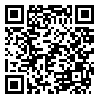
Journal of Modern Research Physics

Volume 9, Issue 1 (Spring and Summer 2024 2024)
JMRPh 2024, 9(1): 44-50 |
Back to browse issues page
Download citation:
BibTeX | RIS | EndNote | Medlars | ProCite | Reference Manager | RefWorks
Send citation to:



BibTeX | RIS | EndNote | Medlars | ProCite | Reference Manager | RefWorks
Send citation to:
Razazi V, Behnia S. Investigation the effect of isospin on the nuclear structure based on the multifractal spectrum of the atomic nucleus. JMRPh 2024; 9 (1) :44-50
URL: http://jmrph.khu.ac.ir/article-1-173-en.html
URL: http://jmrph.khu.ac.ir/article-1-173-en.html
Islamic Azad University, Urmia
Abstract: (224 Views)
The Investigation of the statistical distribution of nuclear energy levels and wave functions in the atomic nucleus as a many-body system is necessary for understanding various reactions of the nuclear structure We are considering the multifractal spectrum analysis of wavefunction to investigate the effect of isospin on the nuclear structure. This analysis is compared with the results obtained by the localization length and the statistical analysis of the distribution of energy levels based on the Brody distribution function. For this purpose, the 46Ca with the only neutron in its valence space and its neighbor nuclide 46Sc, which has different isospin because of replacing one proton to neutron in its valance space, are selected for study on the basis of the nuclear shell model. Energy eigenvalues of the system are calculated with NuShellX code. The amplitudes of wave functions can be achieved by modifying in the new version of this code.
Keywords: Multifractal spectrum, Localization length, Brody distribution, Isospin, Nuclear structure
Type of Study: Research |
Subject:
Special
Received: 2021/01/17 | Accepted: 2025/03/10 | Published: 2024/08/31 | ePublished: 2024/08/31
Received: 2021/01/17 | Accepted: 2025/03/10 | Published: 2024/08/31 | ePublished: 2024/08/31
References
1. (1) Muñoz, L., et al. Examination of experimental evidence of chaos in the bound states of Pb208, Physical Review C 95.1 (2017) 014317. [DOI:10.1103/PhysRevC.95.014317]
2. (2) Levon, A. I., A. G. Magner, and S. V. Radionov, Statistical analysis of excitation energies in actinide and rare-earth nuclei, Physical Review C 97.4 (2018) 044305. [DOI:10.1103/PhysRevC.97.044305]
3. (3) V. Kota, R. Sahu, Structure of wave functions in (1+ 2)-body random matrix ensembles, Physical Review E 64 (1) (2001) 016219. [DOI:10.1103/PhysRevE.64.016219] [PMID]
4. (4) M. Vyas, V. Kota, Random matrix structure of nuclear shell model Hamiltonian matrices and comparison with an atomic example, The European Physical Journal A 45 (1) (2010) 111. [DOI:10.1140/epja/i2010-10991-1]
5. (5) B. A. Brown, B. Wildenthal, Status of the nuclear shell model, Annual Review of Nuclear and Particle Science 38 (1) (1988) 29. [DOI:10.1146/annurev.ns.38.120188.000333]
6. (6) Gómez, J. M. G., et al, Shell-Model studies of chaos and statistical properties in nuclei, Journal of Physics: Conference Series. Vol. 580. No. 1. IOP Publishing, 2015. [DOI:10.1088/1742-6596/580/1/012045]
7. (7) Assmann, Marc, et al, Quantum chaos and breaking of all anti-unitary symmetries in Rydberg excitons, Nature materials 15.7 (2016) 741. [DOI:10.1038/nmat4622] [PMID]
8. (8) Rosenzweig, Norbert, and Charles E. Porter, Repulsion of Energy Levels in Complex Atomic Spectra, Physical Review 120.5 (1960) 1698. [DOI:10.1103/PhysRev.120.1698]
9. (9) Guhr,Thomas, Axel Müller-Groeling, and Hans A. Weidenmüller, Random-matrix theories in quantum physics: common concepts, Physics Reports 299.4-6 (1998) 189. [DOI:10.1016/S0370-1573(97)00088-4]
10. (10) Aziz Alaoui, Youssef, and Bruno Laburthe-Tolra."Method to discriminate between localized and chaotic quantum systems." Physical Review Research 6.4 (2024): 043045. [DOI:10.1103/PhysRevResearch.6.043045]
11. (11) Nambudiripad, Anjali, J. Bharathi Kannan, and M. S. Santhanam. "Chaos and localized phases in a two-body linear kicked rotor system." Physical Review E 109.3 (2024): 034206. [DOI:10.1103/PhysRevE.109.034206] [PMID]
12. (12) Sukumar, N. "Universality and Random Matrix Theory. " Navigating Molecular Networks. Cham: Springer Nature Switzerland, 2025. 55-67. [DOI:10.1007/978-3-031-76290-1_4]
13. (13) Kota, V. K. B., and N. D. Chavda, Embedded random matrix ensembles from nuclear structure and their recent applications, International Journal of Modern Physics E 27.01 (2018) 1830001. [DOI:10.1142/S0218301318300011]
14. (14) Brown, B. A., and W. D. M. Rae, The shell-model code NuShellX@ MSU, Nuclear Data Sheets 120 (2014) 115 [DOI:10.1016/j.nds.2014.07.022]
15. (15) Das, Adway Kumar, et al. "Proposal for many-body quantum chaos detection." Physical Review Research 7.1 (2025): 013181. [DOI:10.1103/PhysRevResearch.7.013181]
16. (16) Santos, Lea F., et al. "Thermalization time in many-body quantum systems." (2021).
17. (17) Gomez, J. M. G., et al, Many-body quantum chaos: Recent developments and applications to nuclei, Physics Reports 499.4-5 (2011) 103. [DOI:10.1016/j.physrep.2010.11.003]
18. (18) Chen, Anffany, Joseph Maciejko, and Igor Boettcher. "Anderson localization transition in disordered hyperbolic lattices." Physical Review Letters 133.6 (2024): 066101. [DOI:10.1103/PhysRevLett.133.066101] [PMID]
19. (19) Chen, Jin-Jun, et al. "Dynamics of quantum coherence in many-body localized systems." Physical Review A 110.2 (2024): 022434. [DOI:10.1103/PhysRevA.110.022434]
20. (20) Dong, Hang, et al. "Measuring the Spectral Form Factor in Many-Body Chaotic and Localized Phases of Quantum Processors." Physical Review Letters 134.1 (2025): 010402. [DOI:10.1103/PhysRevLett.134.010402] [PMID]
21. (21) J. Gomez, K. Kar, V. Kota, R. Molina, J. Retamosa, Localization in 2p1f nuclear shell-model wave functions, Physics Letters B 567 (3-4) (2003) 251. [DOI:10.1016/j.physletb.2003.06.041]
22. (22) Gilpin, William. "Generative learning for nonlinear dynamics." Nature Reviews Physics 6.3 (2024): 194-206. [DOI:10.1038/s42254-024-00688-2]
23. (23) Yajima, Kohei, et al. "Multifractality in monitored single-particle dynamics." Physical Review Research 6.4 (2024): 043049. [DOI:10.1103/PhysRevResearch.6.043049]
Send email to the article author
| Rights and permissions | |
 |
This work is licensed under a Creative Commons Attribution-NonCommercial 4.0 International License. |


